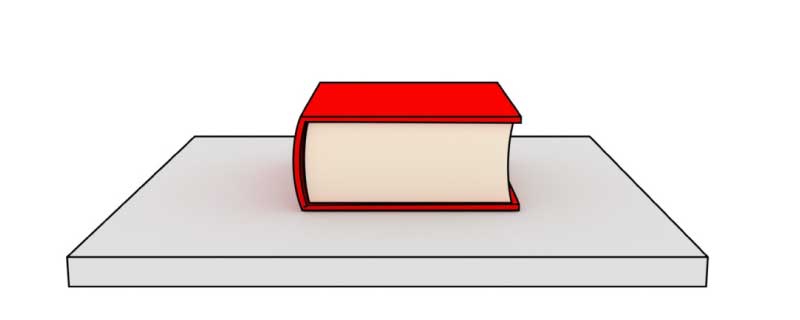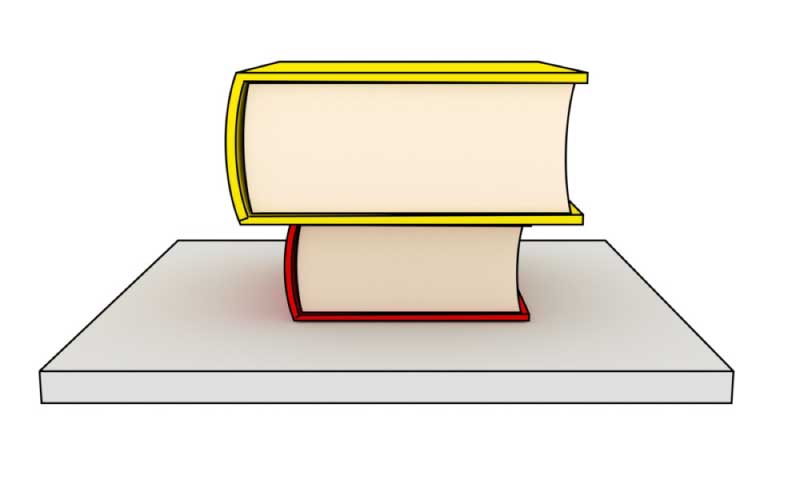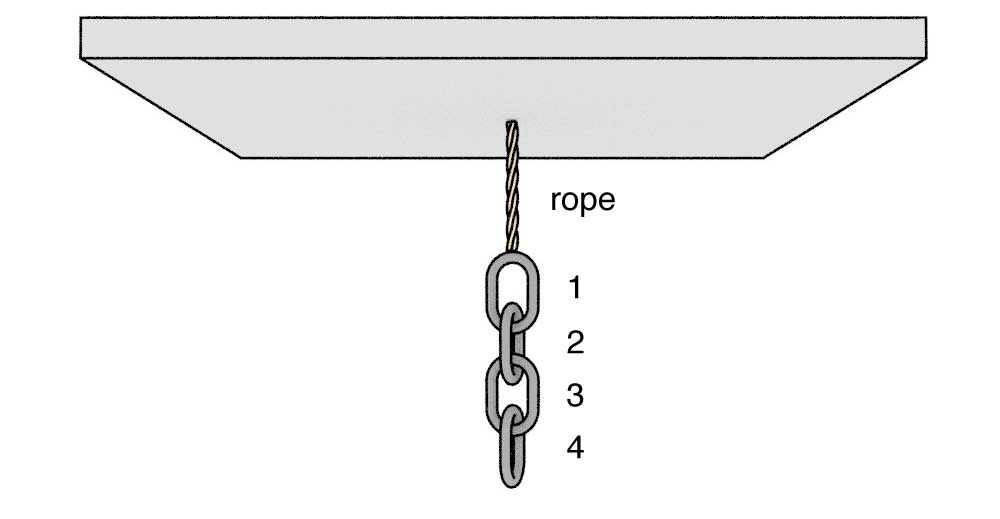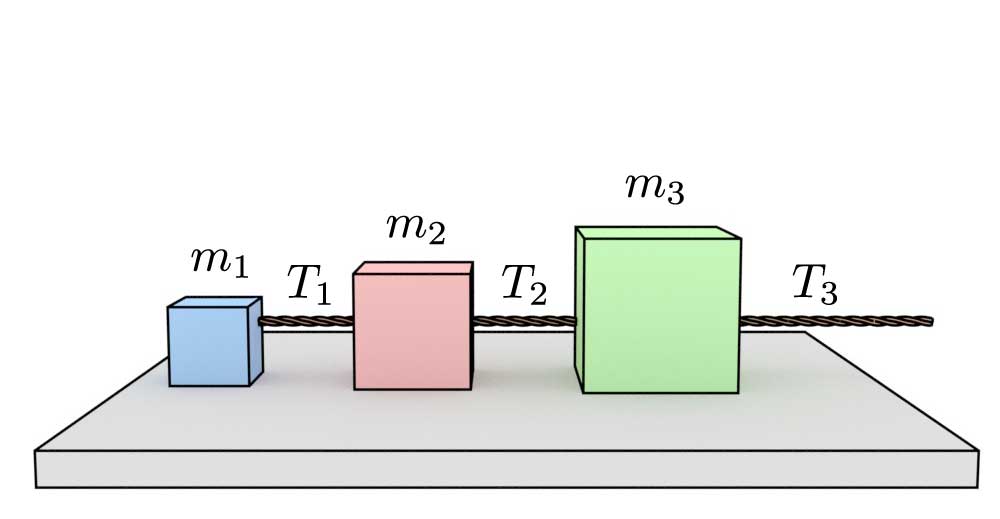Physics 207 - Forces Tutorial
Exercise 1
Two people are attempting to move a large block. The block however does not move. Chris is pushing on the block. Julia is pulling on a rope attached to the block.

On the large sheet of paper in front of your group, draw a large dot to represent the block. Draw vectors with their tails on the dot to show the forces exerted on the block. Label each vector and write a brief description of that force next to the vector.
In the box below, enter the number of forces that you have drawn.
In Physics, all forces arise from an interaction between two objects. Forces are specified by identifying the object on which the force is exerted and the object that is exerting the force. For example, in the situation above, a gravitational force is exerted on the block by the earth.
In the box below, describe each of the forces that you have indicated in a similar fashion.
The diagram you have drawn is called a free-body diagram (FBD). Only forces on the object (in this case the block) should be included. A FBD should not include forces exerted by the object, vector components, or other objects.
All forces arise from the interactions between objects. Which of the forces exerted on the block require direct contact between the block and the object exerting the force?
Which of the forces exerted on the block do not arise direct from contact between the block and the object exerting the force?
There are many different types of forces, including: friction (f), tension (T), magnetic forces, normal forces (N), and the gravitation force (W, for weight). Categorize these forces according to whether they are contact or non-contact forces).
It is often useful to label forces in a way that makes clear (1) the type of force, (2) the object on which the force is exerted, and (3) the object exerting the force. For example, the gravitational force exerted on the block by the earth might be labeled $W_{B,E}$. Label all of the forces on your FBD of the block above in this manner, and identify them below.
Exercise 2
Sketch a FBD on your large paper for the red book at rest on a level table. (Remember that a FBD should not have anything on it except a dot to represent the book and the forces exerted on the book.)

Make sure the label for each force indicates:
- the type of force (gravitational, frictional…)
- the object on which the force is exerted, and
- the object exerting the force
Rank the relative magnitude from largest to smallest of all of the forces on your diagram in the box below. If any 2 forces have the same magnitude, note that explicitly. In the box also explain your reasoning.
Exercise 3
A second book of larger mass (the yellow one) is placed on top of the book in Exercise 2.

Sketch a free body diagram for each of the books on your paper. Label all forces as above.
Specify which forces are contact and which forces are non-contact.
For all forces on the 2 FBD’s (the upper book and the lower book), how many forces are there?
Rank the relative magnitude from largest to smallest of all of these forces in the box below. If any 2 forces have the same magnitude, note that explicitly. In the box also explain your reasoning.
Exercise 4
A chain is suspended by a rope as shown below. The chain is composed of 4 identical links and does not move.

Draw a free body diagram for each of the 4 links. Label each of the forces as you have been doing.
Rank the relative magnitude from largest to smallest of all of the forces. If any 2 forces have the same magnitude, note that explicitly. In the box also explain your reasoning.
Exercise 5
Three blocks ($m_1=1.2$ kg, $m_2=2.4$ kg, and $m_3=3.1$ kg) are connected on a horizontal frictionless surface with light string as shown below. The system is pulled to the right with a force $T_3=6.5$ N.

a) Calculate the acceleration of the system.
b) Find the tension $T_1$
c) Find the tension $T_2$
The materials are based on activities from Tutorials in introductory physics, L.C. McDermott, P.S. Shaffer, and the Physics Education Group at the University of Washington (Prentice Hall, Upper Saddle River NJ, 1998).